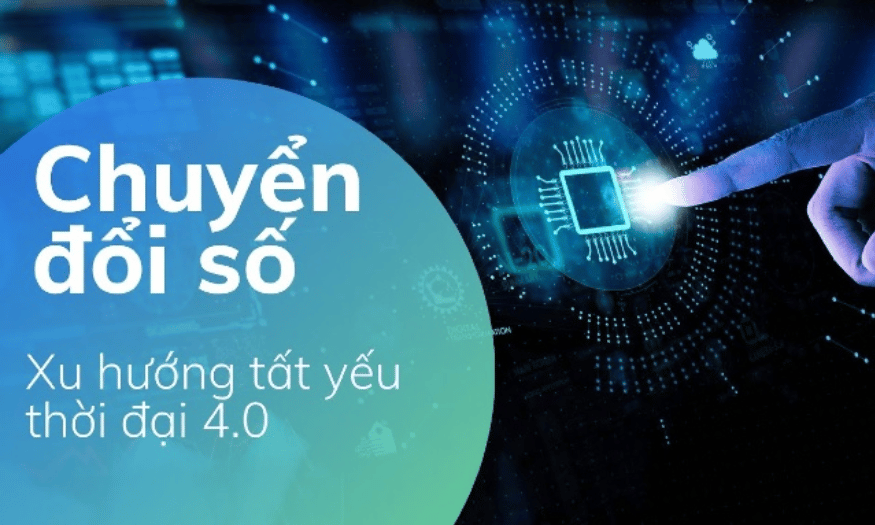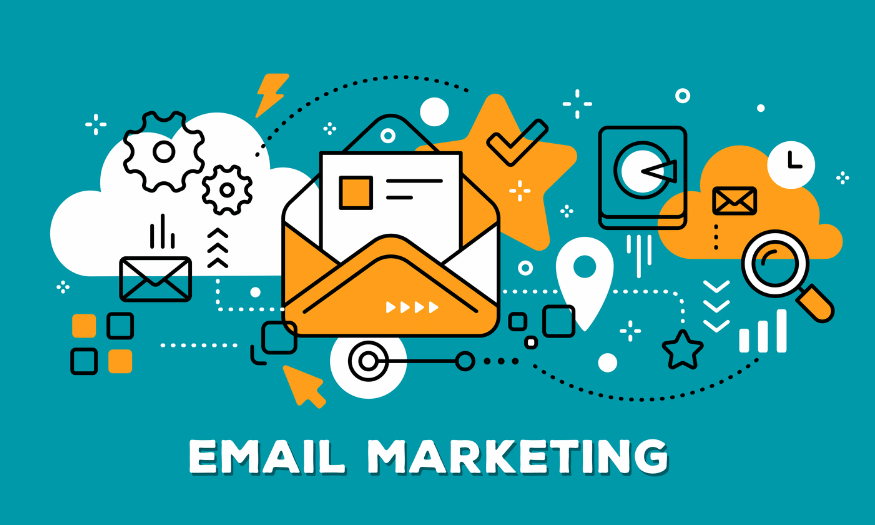Best Selling Products
Discover 15 Digital Transformation Trends in 2025
Nội dung
- 1. Integrating artificial intelligence and machine learning
- 4. Cloud computing technology
- 5. 5G Technology and Internet of Things (IoT)
- 6. Prioritize investment in cybersecurity
- 7. Blockchain technology
- 8. Edge computing trends
- 9. Digital Twin Technology
- 10. Interactive and personalized shopping
- 11. Sustainable digital transformation
- 12. Quantum computing
- 13. Conclusion
Digital Transformation has become a hot keyword in the modern business environment. It is not simply about applying new technology but also related to changing the way organizations operate, think and strategy. In the context of globalization and rapid development of technology, digital transformation is becoming a decisive factor for the survival and sustainable development of businesses. In 2025, we will witness new trends in digital transformation, deeply affecting all fields from manufacturing, services to education and healthcare. Let's explore the digital transformation trends in 2025 with Sadesign.

Digital Transformation has become a hot keyword in the modern business environment. It is not simply about applying new technology but also related to changing the way organizations operate, think and strategy. In the context of globalization and rapid development of technology, digital transformation is becoming a decisive factor for the survival and sustainable development of businesses. In 2025, we will witness new trends in digital transformation, deeply affecting all fields from manufacturing, services to education and healthcare. Let's explore the digital transformation trends in 2025 with Sadesign .
1. Integrating artificial intelligence and machine learning
Artificial Intelligence (AI) and Machine Learning (ML) are becoming the centerpieces of the digital transformation revolution. By 2025, the integration of AI and ML will not only be a trend, but also a necessity for business survival and growth. Companies are realizing that the application of these two technologies not only helps optimize processes but also significantly improves user experience.
One of the most prominent applications of AI and ML is business process automation. These technologies have the ability to automate complex processes such as supply chain management, customer service, and financial data processing. With the help of AI, businesses can reduce errors, save time and costs, thereby focusing on more strategic tasks.
In addition, the ability of AI and ML to analyze big data allows businesses to detect patterns and trends that humans may miss. Machine learning models not only help predict customer behavior but also identify business risks, thereby improving decision-making and increasing competitiveness in the market.
.png)
2. Artificial Intelligence Continues to Develop
Generative AI is on the rise and is expected to fundamentally change many industries by 2025. Unlike traditional AI systems, Generative AI does not simply simulate but is also capable of creating new, more sophisticated and complex products. This opens up many opportunities for organizations to improve their production and product development processes.
One of the prominent applications of Generative AI is content automation. Media and advertising companies are using this technology to quickly produce articles, videos, and promotional materials. This process not only saves time but also reduces production costs, allowing companies to focus on innovation and improving product quality.
Generative AI also plays an important role in supporting decision making. In the finance and insurance sectors, this technology helps synthesize and analyze data to create detailed analytical reports. This helps managers make faster and more accurate decisions, thereby improving business performance.
3. Smart applications are applied in many fields
The year 2025 will see the explosion of smart applications in various fields, thanks to the development of AI and machine learning technology. These applications not only improve work efficiency but also bring better user experience. This is happening strongly in many industries, from customer care to education and entertainment.
AI chatbots are becoming a mainstream trend in customer service. With natural interactions and deep contextual understanding, chatbots can provide 24/7 service, helping businesses improve customer satisfaction. They not only reduce the workload for employees but also create positive experiences for users.
In addition, voice assistant technology is becoming increasingly popular. Virtual assistants such as Siri, Google Assistant and Alexa are being improved to understand and respond to commands more naturally. Integrating these assistants into personal health management systems allows patients to easily track their medication schedules and follow-up visits, bringing convenience and efficiency to health care.
.png)
4. Cloud computing technology
Cloud computing technology is becoming one of the hottest topics in the business world. The increasing demand for data storage and processing has led many businesses to turn to cloud computing solutions, which offer flexibility and easy scalability. The cloud computing market is expected to continue to grow strongly, bringing many opportunities for businesses.
One of the biggest benefits of cloud computing is its ability to provide big data analytics solutions. Businesses can mine and analyze huge amounts of data to make better decisions. This not only helps optimize operations but also creates a competitive advantage in the market.
In addition, cloud computing also helps businesses increase flexibility and reduce costs of investment in physical infrastructure. Businesses can easily expand their operations without worrying about upgrading the system. This helps them adapt quickly to changes in the market and customer needs.
5. 5G Technology and Internet of Things (IoT)
5G has opened a new era for internet connectivity, promoting the rapid development of many applications in various fields. With high speed and low latency, 5G creates ideal conditions for deploying Internet of Things (IoT) solutions. This not only helps people interact quickly with technology but also improves the quality of service in many industries such as manufacturing, healthcare and transportation.
In the healthcare industry, the combination of 5G and IoT technology has expanded the possibilities of remote healthcare. Modern wearable devices equipped with precise sensors are capable of monitoring the user’s vital health indicators such as heart rate, blood pressure, and blood oxygen levels. Thanks to the stable and fast connection of 5G, health data can be transmitted instantly to doctors and medical professionals, helping them make timely and more accurate decisions.
In addition, 5G also supports IoT applications in smart manufacturing, where production lines can be connected and controlled remotely. This not only optimizes the production process but also reduces waste and increases efficiency. From monitoring and adjusting equipment to analyzing production data, 5G is helping businesses improve productivity and enhance product quality.
.png)
6. Prioritize investment in cybersecurity
In today’s digital age, cybersecurity is no longer an option but has become an essential element for every business. With the rise of increasingly sophisticated cyber threats, companies are investing heavily in cybersecurity solutions to protect their data and systems. One of the prominent trends is the application of artificial intelligence in threat detection.
AI has become an ideal tool for enhancing cybersecurity due to its ability to analyze quickly and accurately. AI-powered intrusion detection systems (IDS) and intrusion prevention systems (IPS) can monitor and stop suspicious behavior before it causes serious consequences. This technology helps businesses detect unusual behavior patterns, thereby protecting their systems more effectively.
Advanced encryption technology also plays an important role in protecting sensitive data. Applying multi-layered encryption helps ensure that data remains secure, even if information is stolen. In particular, employee cybersecurity training programs are becoming an essential part of many companies' security strategies, helping to raise awareness and preventative skills across the entire organization.
7. Blockchain technology
When it comes to digital transformation trends in 2024, many businesses will immediately think of applying blockchain technology to their operations. Blockchain is a cryptographically secured and linked data structure that acts as a distributed ledger, storing information about transactions publicly. This not only increases transparency but also helps businesses protect intellectual property rights and improve supply chain management.
In supply chain management, many businesses have used blockchain technology to track products from the point of production to the final delivery point. This not only ensures product authenticity but also increases transparency throughout the entire production and distribution process. Blockchain helps businesses manage and trace the origin of products, from input materials to the time the product reaches the consumer.
Blockchain technology is also being used in identity verification, providing secure and transparent solutions for customers. Implementing effective verification solutions ensures that only authenticated users or organizations can access data and services. This not only reduces the risk of fraud but also protects consumer rights.
.png)
8. Edge computing trends
Edge computing is becoming an indispensable trend in the development of many industries such as tourism, transportation, energy, healthcare, and banking. According to a report from MarketsandMarkets, the global edge computing market reached a value of 3.6 billion USD in 2020 and is expected to increase to 15.7 billion USD by 2025. This is a sign that more and more businesses are realizing the importance of this technology.
The strength of edge computing lies in the ability to process data at its source, reducing the amount of data that needs to be transferred. This not only reduces data transmission and processing bottlenecks, but also improves response times in real-time applications. By placing processing devices closer to where the data is generated, businesses can optimize processes and improve operational efficiency.
In areas such as healthcare, edge computing enables smart medical devices to process data on the spot, helping to deliver fast and accurate care. Furthermore, in the transportation industry, this technology also helps to monitor vehicle health and adjust schedules dynamically, thereby improving customer experience and increasing operational efficiency.
9. Digital Twin Technology
In 2024, digital twin technology is emerging as a major digital transformation trend, with widespread applications in many fields such as manufacturing and healthcare. This technology allows the creation of digital versions of physical objects, thereby providing insight into their operation and performance.
By using digital twins, businesses can gain a better understanding of their manufacturing processes. For example, an automotive factory can simulate its entire assembly line, collecting detailed data about each stage of production. This helps them spot potential problems early, plan maintenance more effectively, and optimize the production process.
Going beyond performance monitoring, digital twin technology also enables businesses to predict and prevent potential risks. In the energy industry, for example, virtual models of power stations can be used to test a variety of scenarios, from equipment failures to extreme weather conditions. This allows engineers to better prepare for potential challenges and ensure continuity of operations.
.png)
10. Interactive and personalized shopping
Interactive and personalized shopping is becoming a prominent trend in the retail and e-commerce sector, aiming to optimize the consumer experience through advanced digital technologies. This not only helps to attract customers but also increases their loyalty to the brand.
One of the prominent applications of this trend is virtual product testing. Augmented reality (AR) technology allows customers to “try on” products such as clothing and accessories directly on their bodies, allowing them to adjust the size, color, and style. This not only provides an interesting experience but also helps customers make more accurate purchasing decisions, reducing the rate of returns.
Additionally, enhanced customer support is also an important part of the modern shopping experience. Using AI chatbots, retail websites can provide 24/7 support, help customers find products, and provide detailed information about the goods. This not only saves customers time but also creates a sense of closeness and friendliness towards the brand.
11. Sustainable digital transformation
Sustainable digital transformation is becoming one of the important goals of many businesses, aiming to optimize business operations while ensuring to minimize negative impacts on the environment. This not only helps businesses improve performance but also contributes to the sustainable development of society.
One of the prominent activities in sustainable digital transformation is optimizing energy consumption. Companies are now applying IoT and AI technologies to automate production processes, thereby minimizing unnecessary energy consumption. Using energy efficiently not only saves costs but also reduces carbon emissions into the environment.
In addition, reducing electronic waste is also an important part of many businesses' sustainability strategies. Companies are encouraging the recycling of equipment, extending product life, and using environmentally friendly materials. By promoting the recycling and reuse of electronic components, businesses not only protect the environment but also save many valuable resources.
.png)
12. Quantum computing
Quantum computing is expected to be one of the top digital transformation trends in 2024, thanks to the superior computing power it offers. Using qubits, quantum computers are capable of performing multiple calculations simultaneously, opening up the opportunity to solve complex problems faster and more efficiently than classical computers.
This technology not only advances scientific research but also has the potential to improve medical diagnosis and treatment methods. Thanks to its ability to accurately simulate biological processes, quantum computers can help researchers find new treatments for complex diseases, thereby improving the quality of life for patients.
Quantum computers also play an important role in enhancing information security. With the ability to decode complex algorithms, this technology can help protect sensitive data and ensure the safety of information systems. This is especially important in an era where cyber threats are increasingly sophisticated and unpredictable.
.png)
13. Conclusion
Digital transformation is not just a temporary trend but a necessary process for businesses to survive and thrive in an increasingly digital world. The upcoming year 2025 promises to bring many new opportunities and challenges for organizations. Understanding and optimizing these trends will help businesses not only overcome difficulties but also become leaders in the industry.












































